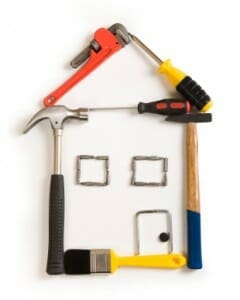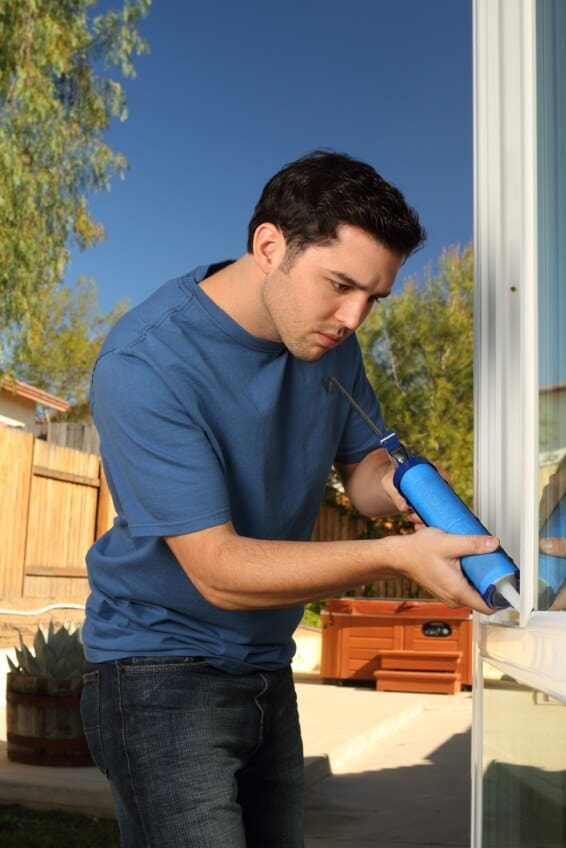 arch 31, 2013 marks the end of the LiveSmart BC Efficiency Incentive Program, a tax rebate program for homes investing in energy-saving renovations. Since 2008, the wildly popular program has awarded over $77.5 million in incentives to 100,000 participating households.
If you missed the deadline, never fear. There are plenty of other provincial and federal programs encouraging homeowners to invest in home renovations.. We round out our top five.
(Certain restrictions may apply. Check websites for program details and deadlines.)
B.C. Seniors’ Home Renovation Tax Credit This year-old program assists individuals 65 and over with the cost of certain permanent home renovations to improve accessibility or help a senior be more functional or mobile at home.
New Housing GST/HST Rebate: This federal program is meant to defray a portion of the GST or HST paid on a new house or substantially renovating an existing house, up to a maximum of 1.5 per cent of the GST/HST.
Power Smart Incentives and Rebates BC Hydro’s program includes rebates for light fixtures, windows and home electronics.
Switch ’n’ Shrink This Terasen Gas incentive gives homeowners a $1,000 rebate for switching to Energy Star natural gas heating systems. Other rebates and incentives are available for installation of an EnerChoice fireplace, and storage tank and furnace upgrades.
Financial Assistance Canada Mortgage and Housing Corporation (CHMC) offers financial assistance to low-income homeowners, persons with a disability, homeowners in rural areas and seniors seeking home adaptations. (cmhc-schl.gc.ca)
arch 31, 2013 marks the end of the LiveSmart BC Efficiency Incentive Program, a tax rebate program for homes investing in energy-saving renovations. Since 2008, the wildly popular program has awarded over $77.5 million in incentives to 100,000 participating households.
If you missed the deadline, never fear. There are plenty of other provincial and federal programs encouraging homeowners to invest in home renovations.. We round out our top five.
(Certain restrictions may apply. Check websites for program details and deadlines.)
B.C. Seniors’ Home Renovation Tax Credit This year-old program assists individuals 65 and over with the cost of certain permanent home renovations to improve accessibility or help a senior be more functional or mobile at home.
New Housing GST/HST Rebate: This federal program is meant to defray a portion of the GST or HST paid on a new house or substantially renovating an existing house, up to a maximum of 1.5 per cent of the GST/HST.
Power Smart Incentives and Rebates BC Hydro’s program includes rebates for light fixtures, windows and home electronics.
Switch ’n’ Shrink This Terasen Gas incentive gives homeowners a $1,000 rebate for switching to Energy Star natural gas heating systems. Other rebates and incentives are available for installation of an EnerChoice fireplace, and storage tank and furnace upgrades.
Financial Assistance Canada Mortgage and Housing Corporation (CHMC) offers financial assistance to low-income homeowners, persons with a disability, homeowners in rural areas and seniors seeking home adaptations. (cmhc-schl.gc.ca) Home Renovations: 5 Great Rebate Programs
M arch 31, 2013 marks the end of the LiveSmart BC Efficiency Incentive Program, a tax rebate program for homes investing in energy-saving renovations. Since 2008, the wildly popular program has awarded over $77.5 million in incentives to 100,000 participating households.
If you missed the deadline, never fear. There are plenty of other provincial and federal programs encouraging homeowners to invest in home renovations.. We round out our top five.
(Certain restrictions may apply. Check websites for program details and deadlines.)
B.C. Seniors’ Home Renovation Tax Credit This year-old program assists individuals 65 and over with the cost of certain permanent home renovations to improve accessibility or help a senior be more functional or mobile at home.
New Housing GST/HST Rebate: This federal program is meant to defray a portion of the GST or HST paid on a new house or substantially renovating an existing house, up to a maximum of 1.5 per cent of the GST/HST.
Power Smart Incentives and Rebates BC Hydro’s program includes rebates for light fixtures, windows and home electronics.
Switch ’n’ Shrink This Terasen Gas incentive gives homeowners a $1,000 rebate for switching to Energy Star natural gas heating systems. Other rebates and incentives are available for installation of an EnerChoice fireplace, and storage tank and furnace upgrades.
Financial Assistance Canada Mortgage and Housing Corporation (CHMC) offers financial assistance to low-income homeowners, persons with a disability, homeowners in rural areas and seniors seeking home adaptations. (cmhc-schl.gc.ca)
arch 31, 2013 marks the end of the LiveSmart BC Efficiency Incentive Program, a tax rebate program for homes investing in energy-saving renovations. Since 2008, the wildly popular program has awarded over $77.5 million in incentives to 100,000 participating households.
If you missed the deadline, never fear. There are plenty of other provincial and federal programs encouraging homeowners to invest in home renovations.. We round out our top five.
(Certain restrictions may apply. Check websites for program details and deadlines.)
B.C. Seniors’ Home Renovation Tax Credit This year-old program assists individuals 65 and over with the cost of certain permanent home renovations to improve accessibility or help a senior be more functional or mobile at home.
New Housing GST/HST Rebate: This federal program is meant to defray a portion of the GST or HST paid on a new house or substantially renovating an existing house, up to a maximum of 1.5 per cent of the GST/HST.
Power Smart Incentives and Rebates BC Hydro’s program includes rebates for light fixtures, windows and home electronics.
Switch ’n’ Shrink This Terasen Gas incentive gives homeowners a $1,000 rebate for switching to Energy Star natural gas heating systems. Other rebates and incentives are available for installation of an EnerChoice fireplace, and storage tank and furnace upgrades.
Financial Assistance Canada Mortgage and Housing Corporation (CHMC) offers financial assistance to low-income homeowners, persons with a disability, homeowners in rural areas and seniors seeking home adaptations. (cmhc-schl.gc.ca)
 arch 31, 2013 marks the end of the LiveSmart BC Efficiency Incentive Program, a tax rebate program for homes investing in energy-saving renovations. Since 2008, the wildly popular program has awarded over $77.5 million in incentives to 100,000 participating households.
If you missed the deadline, never fear. There are plenty of other provincial and federal programs encouraging homeowners to invest in home renovations.. We round out our top five.
(Certain restrictions may apply. Check websites for program details and deadlines.)
B.C. Seniors’ Home Renovation Tax Credit This year-old program assists individuals 65 and over with the cost of certain permanent home renovations to improve accessibility or help a senior be more functional or mobile at home.
New Housing GST/HST Rebate: This federal program is meant to defray a portion of the GST or HST paid on a new house or substantially renovating an existing house, up to a maximum of 1.5 per cent of the GST/HST.
Power Smart Incentives and Rebates BC Hydro’s program includes rebates for light fixtures, windows and home electronics.
Switch ’n’ Shrink This Terasen Gas incentive gives homeowners a $1,000 rebate for switching to Energy Star natural gas heating systems. Other rebates and incentives are available for installation of an EnerChoice fireplace, and storage tank and furnace upgrades.
Financial Assistance Canada Mortgage and Housing Corporation (CHMC) offers financial assistance to low-income homeowners, persons with a disability, homeowners in rural areas and seniors seeking home adaptations. (cmhc-schl.gc.ca)
arch 31, 2013 marks the end of the LiveSmart BC Efficiency Incentive Program, a tax rebate program for homes investing in energy-saving renovations. Since 2008, the wildly popular program has awarded over $77.5 million in incentives to 100,000 participating households.
If you missed the deadline, never fear. There are plenty of other provincial and federal programs encouraging homeowners to invest in home renovations.. We round out our top five.
(Certain restrictions may apply. Check websites for program details and deadlines.)
B.C. Seniors’ Home Renovation Tax Credit This year-old program assists individuals 65 and over with the cost of certain permanent home renovations to improve accessibility or help a senior be more functional or mobile at home.
New Housing GST/HST Rebate: This federal program is meant to defray a portion of the GST or HST paid on a new house or substantially renovating an existing house, up to a maximum of 1.5 per cent of the GST/HST.
Power Smart Incentives and Rebates BC Hydro’s program includes rebates for light fixtures, windows and home electronics.
Switch ’n’ Shrink This Terasen Gas incentive gives homeowners a $1,000 rebate for switching to Energy Star natural gas heating systems. Other rebates and incentives are available for installation of an EnerChoice fireplace, and storage tank and furnace upgrades.
Financial Assistance Canada Mortgage and Housing Corporation (CHMC) offers financial assistance to low-income homeowners, persons with a disability, homeowners in rural areas and seniors seeking home adaptations. (cmhc-schl.gc.ca) 
